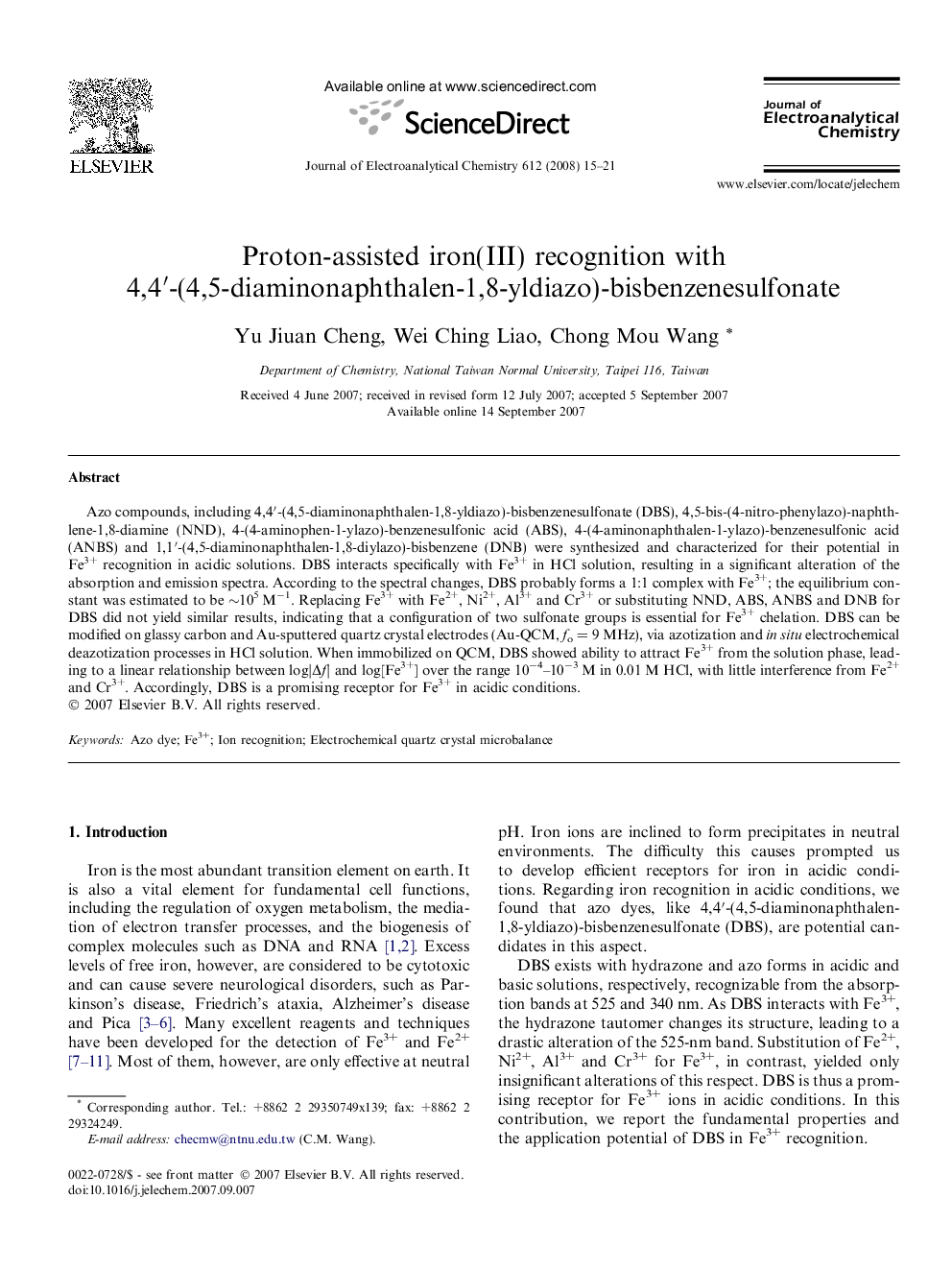| کد مقاله | کد نشریه | سال انتشار | مقاله انگلیسی | نسخه تمام متن |
|---|---|---|---|---|
| 220631 | 463344 | 2008 | 7 صفحه PDF | دانلود رایگان |

Azo compounds, including 4,4′-(4,5-diaminonaphthalen-1,8-yldiazo)-bisbenzenesulfonate (DBS), 4,5-bis-(4-nitro-phenylazo)-naphthlene-1,8-diamine (NND), 4-(4-aminophen-1-ylazo)-benzenesulfonic acid (ABS), 4-(4-aminonaphthalen-1-ylazo)-benzenesulfonic acid (ANBS) and 1,1′-(4,5-diaminonaphthalen-1,8-diylazo)-bisbenzene (DNB) were synthesized and characterized for their potential in Fe3+ recognition in acidic solutions. DBS interacts specifically with Fe3+ in HCl solution, resulting in a significant alteration of the absorption and emission spectra. According to the spectral changes, DBS probably forms a 1:1 complex with Fe3+; the equilibrium constant was estimated to be ∼105 M−1. Replacing Fe3+ with Fe2+, Ni2+, Al3+ and Cr3+ or substituting NND, ABS, ANBS and DNB for DBS did not yield similar results, indicating that a configuration of two sulfonate groups is essential for Fe3+ chelation. DBS can be modified on glassy carbon and Au-sputtered quartz crystal electrodes (Au-QCM, fo = 9 MHz), via azotization and in situ electrochemical deazotization processes in HCl solution. When immobilized on QCM, DBS showed ability to attract Fe3+ from the solution phase, leading to a linear relationship between log∣Δf∣ and log[Fe3+] over the range 10−4–10−3 M in 0.01 M HCl, with little interference from Fe2+ and Cr3+. Accordingly, DBS is a promising receptor for Fe3+ in acidic conditions.
Journal: Journal of Electroanalytical Chemistry - Volume 612, Issue 1, 1 January 2008, Pages 15–21